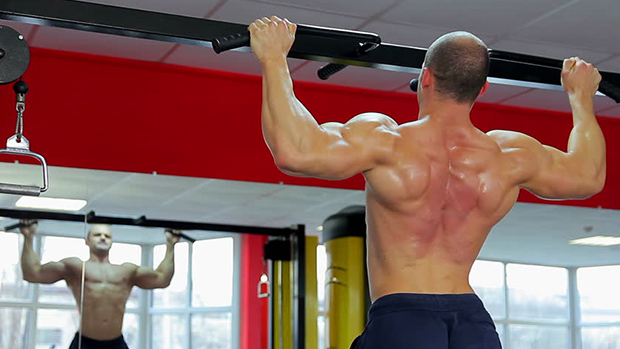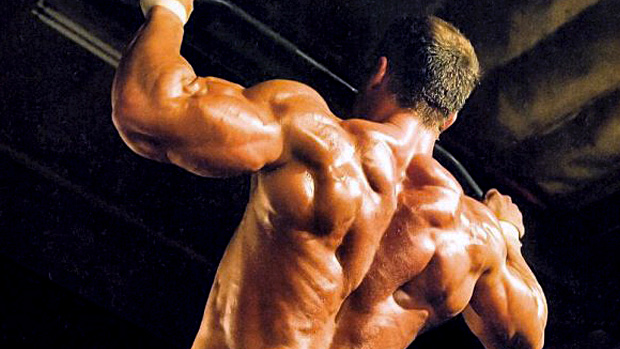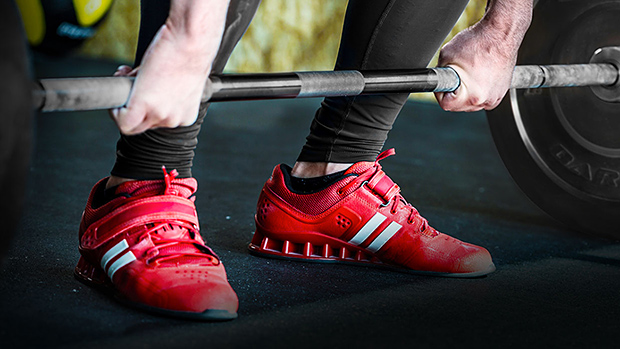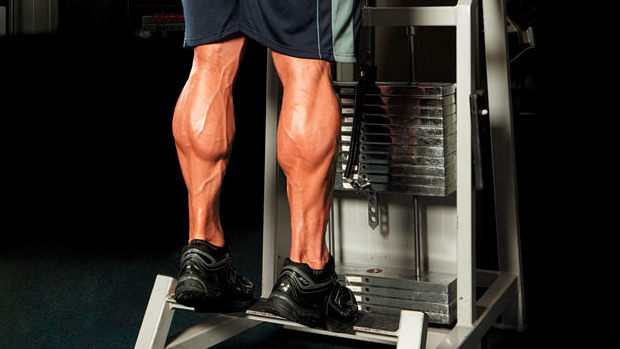Muscle-Bound
Mercifully, that pejorative label isn't as prevalent as it was 30 years ago. Yet many "authorities" still maintain that training for hypertrophy is detrimental to athletic performance.
To keep pace with a more educated fitness enthusiast, the laymen term "muscle-bound" has evolved into science-laden soundbites like "machines and single-joint exercises create non-functional muscles, or "the muscle built through hypertrophy protocols is just cosmetic in nature."
It's still a crock. This mode of thinking isn't just wrong; it's hindering athletes' progress.
The term "muscle-bound" invokes visions of 300-pound bodybuilders as nimble as the Michelin man and as pliable as a cinder block. In reality, muscle size has nothing to do with flexibility or joint range of motion. If this fallacy were true, one would assume that smaller, longer muscles would be a guarantee of flexibility, yet I've trained many scrawny endurance athletes with hamstrings so short they couldn't touch their ankles.
The fact is, the opposite of muscle-bound may be closer to the truth. A larger muscle has a greater potential for length, just as a thicker rubber band can stretch farther than a thin one of the same length. For example, as we age muscle tissue loss is common. When muscles atrophy, the number of sarcomeres within the muscles decrease, impairing the extensibility and functional capability of the tissue.
Empirical evidence shows that trainees, including the elderly, who increase strength and hypertrophy of the muscles around a joint will improve range of motion specific to the trained area.
Functional zealots argue that bodybuilding-style training will make an athlete slow and uncoordinated but "functional training" will make them fast and agile. This might make the typical functional trainee feel better about their eleven-teen inch pythons, but don't buy it since the empirical evidence suggests otherwise.
The ability to create joint stability or display force is limited by the strength of the muscles involved in the movement.
There's no such thing as nonfunctional muscle tissue. Every muscle is a prime mover of some specific joint pattern, and if any single muscle becomes weak or injured, the corresponding movement pattern will be compromised. Trying to improve the weakness with complex movement patterns (functional exercises) may not achieve the desired results.
According to Muscle Activation Technique founder Greg Roskopf, functional training or integrated exercise will only reinforce compensatory patterns if the weak links aren't first identified and eliminated.
Function isn't determined by the complexity of one exercise – what counts is how you string together each exercise to achieve a desired outcome. Strengthening a muscle within a chain will contribute to the quality of that movement, and the nervous system is well equipped to manage an increase in strength within a specific group of muscles and then incorporate that strength into a fluid movement pattern.
Achieving the musculature of top bodybuilders isn't even possible for 99% of the population. Elite bodybuilders achieve their cartoonish body proportions through a combination of rare genetics, extreme motivation, and in non-tested circles, anabolic steroid use.
During the 1970s and 80's, East Germany won many medals on the backs of juiced female athletes, including 40 gold medals at the 1976 Montréal Olympics. Now if you assume that the drugs improved performance through neural and androgenic changes only, you'd be wrong. The women of the East German swim team were infamous for their husky and blocky bodies, which obviously didn't negate their talents in the pool. The legal, moral, and health ramifications of their actions are another matter entirely.
During baseball's "steroid era" of the late 90's through early 2000s', records were being crushed left and right. Some players achieved dramatic increases in muscle mass and strength from one season to the next, causing suspicious coaches and athletes to suspect that performance enhancing drugs were to blame. When the truth came out, the knee jerk reaction in the athletic world was widespread – big muscles are evil and if you're too muscular, you must be juicing.
This scenario opened the door for a new wave of strength coaches who relied heavily on bands, balls, and balance devices. Their programs didn't look a thing like the programs used by the cheating athletes and coaches. This "new" type of training provided peace of mind for skeptical managers, GM's, and owners. Unfortunately, these so-called cutting-edge programs failed to markedly improve athletic performance.
Regardless of which side of the fence you choose to live, the fact that these "muscle-bound" athletes were kicking major ass is undeniable.
So what can we learn from the drug-era debacle?
Performance enhancing drugs (PED's) have a positive effect on athletic performance. They accelerate recovery, cause muscle hypertrophy of both type I and type II muscle fibers, and increase motor unit recruitment of high-threshold motor units.
The question is, how do we emulate these results through natural methods? While it's safe to say a gap exists between the efficacy of current sports science practices and that of illegal drugs, I can tell you for sure performing low intensity balance exercises while standing on a Bosu-ball isn't helping matters.
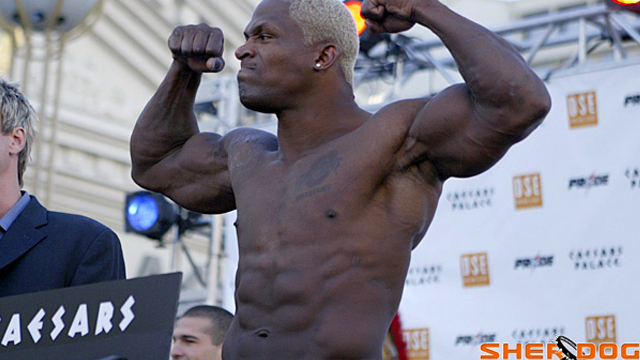
I've had great success helping athletes improve performance by focusing on these four tasks:
- Decreasing injury potential by addressing muscle imbalances
- Increasing maximal strength and hypertrophy of prime movers of sport or activity
- Accelerating recovery through nutritional and supplement modifications
- Maximize endogenous androgens through dietary and lifestyle changes
I recommend pure hypertrophy training for athletes. Maximally developing the prime movers of your sport will increase power and speed potential. I call it bodybuilding for athletes.
To give you a clearer understanding of my training philosophy, here's a program I designed for Brad Hawpe, first baseman for the San Diego Padres.
We used this program for weeks three to five of our 12-week offseason training. (During the first two weeks, the training focus was on muscle balance and range of motion.)
Brad arrived at my facility in mid-November, 2010 weighing 199 pounds at 14.8% body-fat. We completed training on February 9th, 2011 and he weighed 216 pounds at 14% body-fat.
He arrived at spring training a week later weighing 218 pounds.
Day 1: Lower Body – Quad Dominant
| Exercise | Sets | Reps | Tempo | Rest | |
|---|---|---|---|---|---|
| A | Safety bar squat – wide stance | 6 | 8,6,4,4,6,8 | 30X1 | 3-4 min. |
| If you don?t have a safety bar, use back squats. Use as much weight as possible without missing reps. | |||||
| B1 | Dumbbell split squat | 3 | 6-8 | 20X0 | 90 sec. |
| Take last set to failure. | |||||
| B2 | Kneeling leg curl or single leg curl | 3 | 6-8 | 21X0 | 90 sec. |
| Keep foot dorsiflexed (toe towards shin). | |||||
| C | Backwards sled drag – 1 arm, thick grip | 3 | 80-feet/arm | N/A | 2-3 min. |
| Using a thick handle, perform a backwards sled drag, keep the non-working arm at your side. Keep elbow of working arm completely straight, chest up, shoulders down and back. Do 3 sets of 80 feet/arm, complete 80 feet with non-dominant arm, switch hands and complete the 80-foot trip back. | |||||
Day 2: Horizontal Push/Pull – Arms
| Exercise | Sets | Reps | Tempo | Rest | |
|---|---|---|---|---|---|
| A1 | One-arm Dumbbell row, neutral grip | 4 | 8-10 | 20X1 | 90 sec. |
| Use a staggered three-point stance, pull dumbbell towards hip, and keep elbow tucked into side. Squeeze shoulder back at the top of movement. | |||||
| A2 | Supine Dumbbell press – rotating grip | 4 | 6-8 | 3010 | 90 sec. |
| Keep palms neutral with dumbbells beside lower rib cage. As you press up dumbbells, rotate as if punching. | |||||
| B1 | Kneeling Zottmann Dumbbell curls | 3 | 6-8 | 21X1 | 90 sec. |
| Using a supinated grip (palms up), curl dumbbells to fully flexed position; at this point rotate the hands so palms are facing down. Now lower to start position. Last set to failure. | |||||
| B2 | Side lying Powell raise | 3 | 10-12 | 2010 | 90 sec. |
| Assume side lying position on flat bench, support weight on bent elbow. Perform a rear deltoid lateral raise, allowing arm to come across body. The arm movement looks like a backhand tennis swing. Last set to failure. | |||||
| C | Standing one-arm medicine ball chest pass | 3-5 | 6-8 | N/A | 30 sec. |
| Hold a medicine ball at chest level and perform a push pass, use hips and rotate torso. Start with non-dominant hand. Rest 30 sec./arm and 90 sec./sets | |||||
Day 3: Lower Body – Hip Dominant
| Exercise | Sets | Reps | Tempo | Rest | |
|---|---|---|---|---|---|
| A | Barbell deadlift, mid shin | 6 | 8,6,4,4,6,8 | 31X1 | 3-4 min. |
| Set a barbell in the rack or set plates on boxes so movement starts with barbell at mid shin. Maintain neutral lumbar position. Use as much weight as possible without missing reps. | |||||
| B1 | Reverse hip extension machine | 3 | 10-12 | 2011 | 2 min. |
| Start movement by squeezing glutes and hold for one second at the top of rep. Take last set to failure. | |||||
| B2 | Weighted crunch on Swiss ball or hanging leg raise | 3 | 12-15 | 2010 | 90 sec. |
| Last set to failure. | |||||
| C | Hamstring sled drag | 4-6 | 90 feet | N/A | 2-3 min. |
| Facing away from sled, hold straps with arms running alongside the body. Bend forward at waist until trunk is almost parallel to the ground. Keep low back neutral, chest up, and shoulder blades squeezed together. Initiate steps by pushing through heels of foot with minimal knee bend. | |||||
| D | Dumbbell side flexion | 4 | 10-12 | 2020 | 2 min. |
| Hold dumbbell in one hand, flex laterally to stretch oblique, then fully flex to other side. | |||||
Day 4: Vertical Push/Pull – Arms
| Exercise | Sets | Reps | Tempo | Rest | |
|---|---|---|---|---|---|
| A1 | Chin-up – wide neutral grip, thick grip | 5 | 4-6 | 30X1 | 2 min. |
| A2 | 70-degree incline Dumbbell press, neutral to pronated grip | 5 | 8,6,4,4,12 | 3010 | 2 min. |
| Use as much load as possible without intentionally missing reps. | |||||
| B1 | 60-degree incline Dumbbell curl – offset grip | 3 | 6-8 | 2110 | 2 min. |
| Hold dumbbell with index finger and thumb pressed up against plate. Keep hand supinated (palm up) throughout repetition. | |||||
| B2 | Supine Dumbbell triceps extensions | 3 | 6-8 | 20X1 | 2 min. |
| Lower dumbbells to the top of the shoulders, elbows pointing towards ceiling. | |||||
| C1 | Seated medicine ball overhead toss | 3 | 6-8 | 0X0X | 2 min. |
| Sitting on bench, perform a two-hand overhead pass with an 8-12 pound Dynamax medicine ball. Make sure you bring the ball and arms all the way behind your head. | |||||
| C2 | Seated rope row to neck | 3 | 12-15 | 2011 | 2 min. |
| Using a triceps rope, row to neck, keeping elbows up and out. Pull rope apart as if ripping your shirt open like Superman. | |||||
Muscle bound, nonfunctional hypertrophy, cosmetic muscle; all calling cards of the insecure trainer who can't get his clients – or himself – big and strong.
While being so big you require your own zip code may not make you a better athlete, there's no evidence to suggest being scrawny does, either. It's time for the popularity pendulum to swing back towards the type of training that is conducive to massive strength and hypertrophy gains and away from the "functional training" paradigm.
